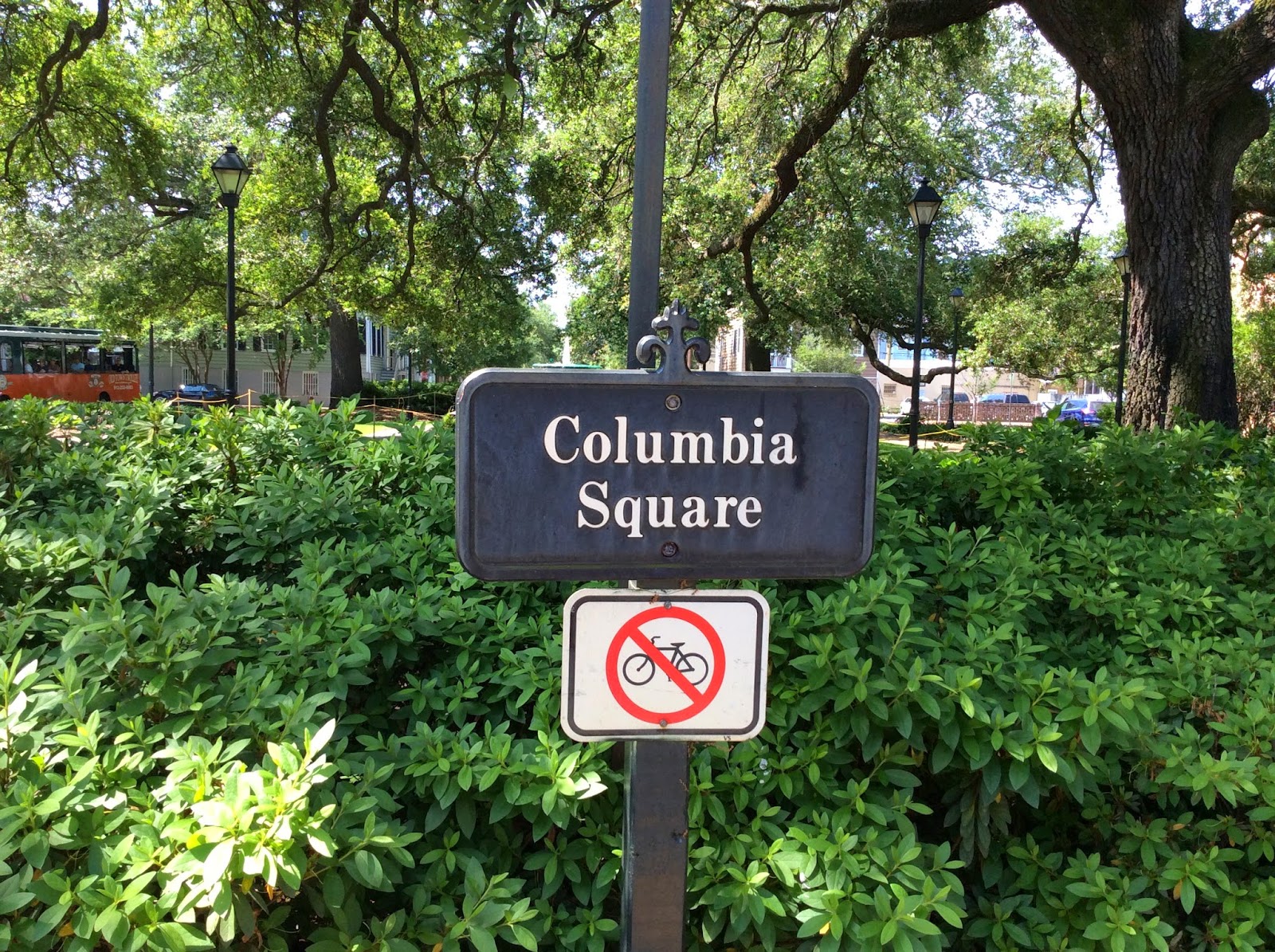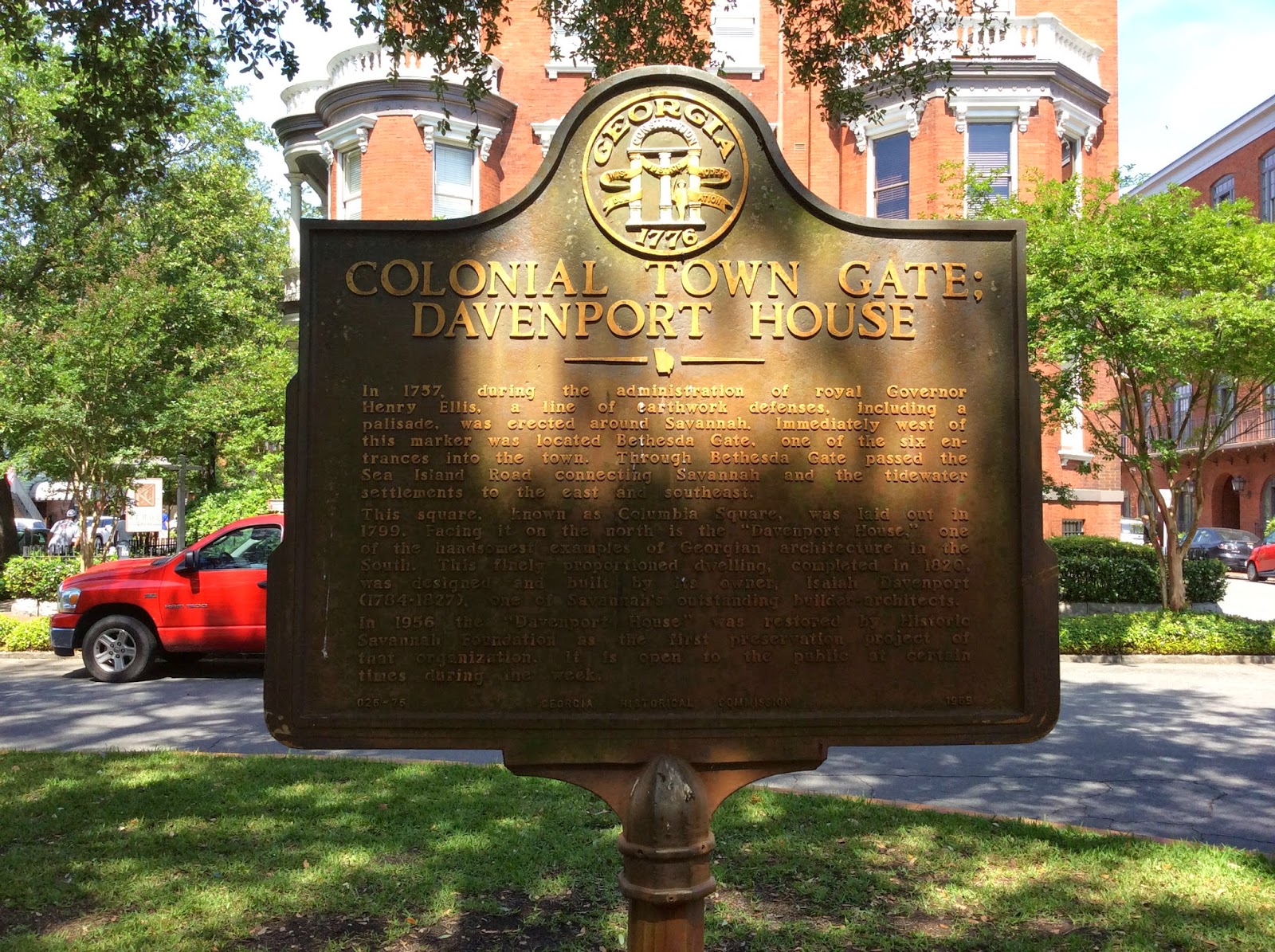We begin with Columbia Square. It is somehow fitting and proper we do so as something very significant happened here and it changed Savannah in ways no one understood at the time. Columbia Square is located on Habersham street between State and York streets. It was named after Columbia the poetic personification of American. This square was laid out in 1799.
This is the Wormsloe Fountain that sits in the center of Columbia Square. The base of the fountain features many themes from nature. It was originally at the Wormsloe Plantation and was moved to Columbia Square in 1970 to honor Augusta and Wymberly DeRenne. Wormsloe was the estate of one of Savannah's first settlers Noble Jones and the DeRennes are his descendants.
This sign stands in Columbia Square and addresses the Davenport House. I apologize for the picture, it was a sunny day and the square is filled with Southern Live Oaks. I tried several things to adjust the picture but it just won't come out clear enough it read. It says the following.
"Colonial Town Gate; Davenport House. In 1737, during the administration of royal Governor Henry Ellis, a line of earthwork defenses, including a palisade, was erected around Savannah. Immediately west of this marker was located Bethesda Gate, one of the six entrances into the town. Through Bethesda Gate passed the Sea Island Road connecting Savannah and the tidewater settlements to the east.and southeast. This square, know as Columbia Square was laid out in 1799. Facing it on the north is the Davenport House one of the handsomest examples of Georgian architecture in the South. This finely proportioned dwelling, completed in 1820, was designed and built by its owner, Isaiah Davenport (1784-1827), one of Savannah's outstanding builder architects. In 1956 the Davenport House was restored by Historic Savannah Foundation as the first preservation project of that organization. It is open to the public at certain times during the week."
The significant thing that is mentioned in passing of the sign is the work of the Historic Savannah Foundation. The year was 1955. The Davenport House had fallen into disrepair. It had over the years become a rundown rooming house in a seedy part of town. It was scheduled for demolition. A group of Savannah women got together, raised the funds, bought the house and had it restored. It is an amazing story. Think of the times. It is the South, 1955 and these are women. The Historic Savannah Foundation has gone on to save hundreds of buildings in Savannah and has been one of the driving forces behind the huge Savannah Historic District we enjoy today. This is the Davenport House as it appears today.
If you go back and look at the sign shown earlier you will notice this house in the background. It is the Kehoe House.
The Kehoe House was built in 1893 for William Kehoe. It is now a highly regarded bed and breakfast. It is also reputed to be one of the most haunted homes in Savannah.
The tree featured in this picture is a Southern Live Oak. Note the tremendous spread of the tree and the meandering nature of its limbs. The blue car in the background is mine and now you know why Columbia Square was first.
As a final word. I'm not a huge fan of government. There are things it does and should do, like law enforcement. Sometimes, like in the case of the Davenport House, private citizens see a need, step in, and do the right thing. Savannah and in all reality the Nation owe a debt of gratitude to the ladies who saw in Davenport House something the rest of us didn't. Rather than sit back and figure it was someone else's problem, they created a solution. An effort that continues to the present day and a revolving fund and other preservation activities that have saved hundreds of buildings. Well done ladies!






No comments:
Post a Comment